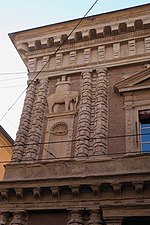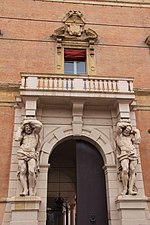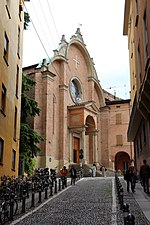Museo internazionale e biblioteca della musica
Libraries in BolognaMuseums in BolognaMusic historyMusic librariesMusic museums in Italy ... and 1 more
Tourist attractions in Bologna

The Museo internazionale e biblioteca della musica is a music museum and music library in the Palazzo Aldini Sanguinetti, in the historic center of Bologna, Italy.
Excerpt from the Wikipedia article Museo internazionale e biblioteca della musica (License: CC BY-SA 3.0, Authors, Images).Museo internazionale e biblioteca della musica
Strada Maggiore, Bologna Galvani
Geographical coordinates (GPS) Address Phone number Website External links Nearby Places Show on map
Geographical coordinates (GPS)
| Latitude | Longitude |
|---|---|
| N 44.4929 ° | E 11.3502 ° |
Address
Museo internazionale e biblioteca della musica
Strada Maggiore 34
40125 Bologna, Galvani
Emilia-Romagna, Italy
Open on Google Maps










